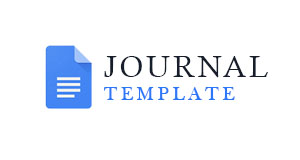Financial Performance Of Sharia Commercial Banks In Indonesia: Does Capital Structure Matter?
Abstract
Islamic banking has experienced a surge in financial growth in the last decade. Global economic challenges have encouraged many conventional banks to transform into sharia banks. Sharia banking can increase its operational efficiency by applying debt and equity financing methods by trade-off theory. This research investigates the effect of capital structure as measured by the debt-to-asset ratio (DAR) and debt-to-equity ratio (DER) on the financial performance of Sharia Commercial Banks as measured by return on assets (ROA) and return on equity (ROE). This research is quantitative with multiple linear regression analysis techniques. The data source comes from OJK Sharia Banking Statistics for 2017-2021. This study shows that DAR and DER have a significant effect on ROA. Apart from that, DAR has a substantial impact on ROE. However, this study indicates that DER does not significantly affect ROE.
Keywords
Full Text:
PDFReferences
Abdullah, H., & Tursoy, T. (2021). Capital Structure and Firm Performance: Evidence of Germany Under IFRS Adoption. Review of Managerial Science, 15, 379–398. https://doi.org/10.1007/s11846-019-00344-5 Anas, M. (2021). Struktur Modal dan Kebijakan Dividen. In N. Hartati (Ed.), Manajemen Keuangan (pp. 70–85). Nuta Media Jogja. Ayange, A., Emmanuel, N. C., Rosemary, I. H., Ndudi, U. C., & Samuel, U. E. (2021). Effect of Capital Structure on Firms Performance in Nigeria. Universal Journal of Accounting and Finance, 9(1), 15–23. https://doi.org/10.13189/ujaf.2021.090102 Banna, H., Hassan, M. K., Ahmad, R., & Alam, M. R. (2022). Islamic banking stability amidst the COVID-19 pandemic: the role of digital financial inclusion. International Journal of Islamic and Middle Eastern Finance and Management, 15(2), 310–330. Das, C. P., & Swain, R. K. (2018). Influence of capital structure on financial performance. Parikalpana: KIIT Journal of Management, 14(1), 161–171. Efendi, A. F. W., & Wibowo, S. S. A. (2017). Pengaruh Debt to Equity Ratio (DER) dan Debt to Asset ratio (DAR) Terhadap Kinerja Perusahaan di Sektor Keuangan yang Terdaftar di Bursa Efek Indonesia. Journal of Applied Managerial Accounting, 1(2), 157–163. Ghardallou, W. (2022). Capital Structure Decisions and Corporate Performance: Does Firm’s Profitability Matter? Journal of Scientific and Industrial Research, 81, 859–865. https://doi.org/10.56042/jsir.v81i08.59697 Hamza, H., & Jedidia, K. Ben. (2020). Central bank digital currency and financial stability in a dual banking system. In Impact of Financial Technology (FinTech) on Islamic Finance and Financial Stability (pp. 233–252). IGI Global. Komara, A., Hartoyo, S., & Andati, T. (2018). Analisis Pengaruh Struktur Modal Terhadap Kinerja Keuangan Perusahaan. Jurnal Keuangan Dan Perbankan, 2(1), 56–68. https://doi.org/10.26905/jkdp.v20i1.141 Lutfiansyah, M. R. A., & Machdar, N. M. (2020). Pengaruh Struktur Modal dan Keputusan Investasi terhadap Kinerja Keuangan Perbankan dengan Corporate Governance sebagai Pemoderasi. KALBISIANA:Jurnal Mahasiswa Institut Teknologi Dan Bisnis Kalbis, 8(2), 1472–1490. Mohammad, H. S., Bujang, I., & Abd Hakim, T. (2019). Capital structure and financial performance of Malaysian construction firms. Asian Economic and Financial Review, 9(12), 1306–1319. Pham, D. H. (2022). Determinants of going-concern audit opinions: evidence from Vietnam stock exchange-listed companies. Cogent Economics & Finance, 10(1), 2145749. Pradhan, R. P., Arvin, M. B., Nair, M., Bennett, S. E., & Bahmani, S. (2019). Short-term and long-term dynamics of venture capital and economic growth in a digital economy: A study of European countries. Technology in Society, 57, 125–134. Qasim, M., Irshad, M., Majeed, M., & Rizvi, S. T. H. (2021). Examining impact of islamic work ethic on task performance: mediating effect of psychological capital and a moderating role of ethical leadership. Journal of Business Ethics, 1–13. Rahman, M. A. (2020). Pengaruh Struktur Modal dan Pertumbuhan Aset Terhadap Kinerja Keuangan Perusahaan yang Terdaftar dalam Jakarta Islamic Index (JII). Akurasi : Jurnal Studi Akuntansi Dan Keuangan, 3(1), 55–68. https://doi.org/10.29303/akurasi.v3i1.25 Ritonga, S. A., Effendi, I., & Prayudi, A. (2021). Pengaruh Struktur Modal Terhadap Kinerja Keuangan Perusahaan Consumer Goods di BEI. Jurnal Ilmiah Manajemen Dan Bisnis (JIMBI), 2(2), 86–95. https://doi.org/10.31289/jimbi.v2i1.383 Romadona, F. P., & Handayani, N. (2021). Pengaruh Perputaran Piutang, Struktur Modal Terhadap Kinerja Keuangan Perusahaan Pembiayaan Non Bank. Jurnal Ilmu Dan Riset Akuntansi, 10(10), 1–15. Shirazi, N. S., Obaidullah, M., & Haneef, M. A. (2015). Integration of waqf and Islamic microfinance for poverty reduction: case of Pakistan. IRTI Working Paper Series. Sivalingam, L., & Kengatharan, L. (2018). Capital structure and financial performance: A study on commercial banks in Sri Lanka. Asian Economic and Financial Review, 8(5), 586–598. Sohail, M. S., & Hasan, M. (2021). Students’ perceptions of service quality in Saudi universities: the SERVPERF model. Learning and Teaching in Higher Education: Gulf Perspectives. Syarif, A. (2019). The Measurement of Customer Satisfaction Index with Method of Importance-Performance and Gap Analysis. Global Review of Islamic Economics and Business, 7(2), 57–67. Syarif, A. (2023a). Fiscal Decentralization and Corruption: The Facts of Regional Autonomy Policies in Indonesia. Jurnal Ilmu Sosial Dan Ilmu Politik; Vol 27, No 1 (2023): JulyDO - 10.22146/Jsp.69007 . https://journal.ugm.ac.id/jsp/article/view/69007 Syarif, A. (2023b). Fiscal Decentralization and Corruption: The Facts of Regional Autonomy Policies in Indonesia. Jurnal Ilmu Sosial Dan Ilmu Politik, 27(1), 60–73. Tretiakova, V. V, Shalneva, M. S., & Lvov, A. S. (2021). The relationship between capital structure and financial performance of the company. SHS Web of Conferences, 91, 1002. Violeta, J., & Linawati, N. (2019). Effect of Anger Traits, Anxiety Traits, and Demographic factor on Investment Decision. Marketing Management Joural, 13(2), 89–96. Violita, R., & Sulasmiyati, S. (2017). Pengaruh Struktur Modal Terhadap Profitabilitas (Studi Pada Perusahaan Food and Baverages Yang Terdaftar di BEI Tahun 2013-2016). Jurnal Administrasi Bisnis (JAB), 51(1), 138–144.
DOI: https://doi.org/10.24952/tijaroh.v9i2.9940
Refbacks
- There are currently no refbacks.
Copyright (c) 2023 At-tijaroh: Jurnal Ilmu Manajemen dan Bisnis Islam

This work is licensed under a Creative Commons Attribution-ShareAlike 4.0 International License.














